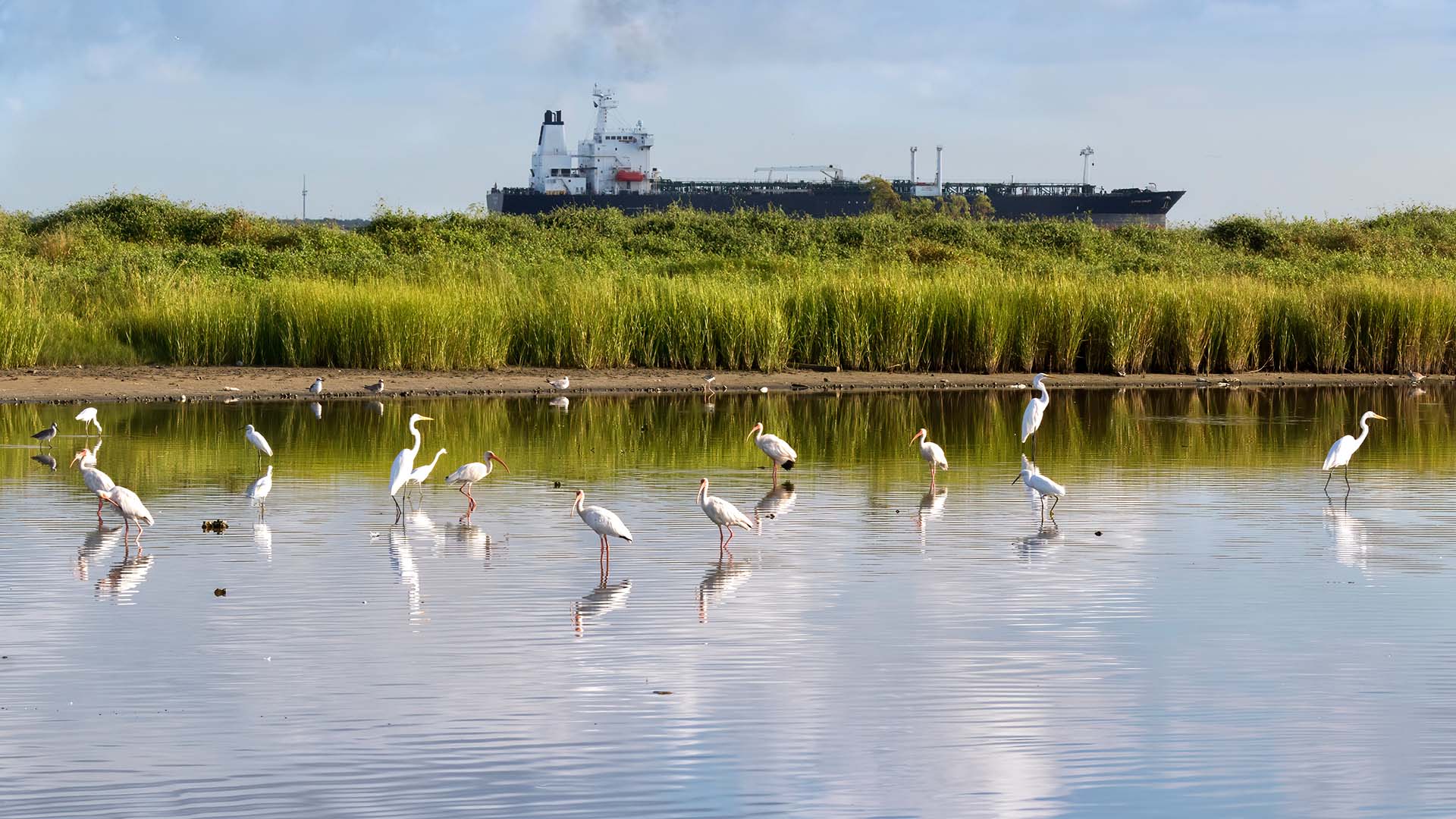- Future Students
- How to Apply
- Visit UHCL
- Admitted Students
- Tuition, Costs and Aid
- Degrees and Programs
- Contact Admissions
- Current Students
- Class Schedule
- Academic Calendar
- Advising
- Events
- Library
- Academic Resources and Support
- Student Services and Resources
- Alumni
- Lifetime Membership
- Alumni Events
- Update Your information
- Awards and Recognitions
- Give to UHCL
'Things to talk about in a job interview': Grant makes research experience possible
May 26, 2022 | UHCL Staff
 Educators and employers have been reaffirming the importance science and the need
for more students to pursue paths in STEM-related fields. But getting a STEM degree
is just part of the story- one of the keys to graduating from a university and starting
a lucrative career in STEM, says University of Houston-Clear Lake's Assistant Professor of Microbiology Michael LaMontagne, is research experience.
Educators and employers have been reaffirming the importance science and the need
for more students to pursue paths in STEM-related fields. But getting a STEM degree
is just part of the story- one of the keys to graduating from a university and starting
a lucrative career in STEM, says University of Houston-Clear Lake's Assistant Professor of Microbiology Michael LaMontagne, is research experience.
A $474,682 grant from the Environmental Protection Agency recently awarded to UH-Clear Lake, in collaboration with the Environmental Institute of Houston, University of North Texas Health Science Center and Galveston Bay Foundation, will help students gain those critical skills to work on a project whose primary goal is to determine the source of fecal contamination in two watersheds that connect to Galveston Bay, a coastal area prone to catastrophic flooding and includes thousands of septic tanks.
The grant will help determine to source of fecal contamination and monitor the emergence of antibiotic-resistant "super bugs" in two watersheds that connect to Galveston Bay.
The grant's co-principal investigator, EIH Executive Director George Guillen, will direct field sampling to monitor microbial contamination of these watersheds, which are prone to catastrophic flooding and includes thousands of septic tanks.
"The primary method for students' involvement in this project is course-based undergraduate research experiences (CUREs)," LaMontagne said. "We have replaced the traditional microbiology teaching lab with a CURE that provides students an authentic experience. We have four labs sections per semester, so we'll have over 100 students engaged in this research every year."
Galveston Bay Foundation Community Programs Manager Charlotte Cisneros said that GBF routinely collects bacteria samples from the bay, but it takes at least a full day to get results. "We can't get real-time data," she said. "With this grant, we plan to create molecular tools to provide point-of-sampling analysis of microbial contamination and find out where the problems are coming from.”
She added that the GBF would reach out to the community through a series of community events to disclose the data collected, to communicate what was learned and share ways to mitigate the amounts of fecal-associated bacteria released into the bay during such weather events."
"It matters to have a community aspect to this grant, because students can see the impact of their research as well, with community partners sharing it and acting on what they've found," she said.
Finding the source of a contaminant in the water is a huge factor in how to address it, LaMontagne explained.
"If the source of the contaminant is human waste, or animals, it matters from a management and public health perspective," he said. "During an extreme weather event, the community and managers need real-time data so they can make informed decisions about the risk that water poses. In advance we need to provide the community background information of what we're measuring and why."
He added the entire process taught students the underlying science and provided outreach to the community that explained the science and techniques that informed the policies.
"The CURE approach transforms student outcomes," he said. "Students who have research experience are more likely to graduate on time and work their field of study. This project, which involves a suite of proteomic, genomic and metagenomics, will differentiate UHCL students from the others. Students will work with cutting edge techniques to generate big data."
These "-omic" skills include next-generation sequencing, which will be done in collaboration with Co-Principal Investigator Michael Allen at UNT-Health Science Center.
LaMontagne also said that the bioinformatic skills that students would acquire along the way was highly prized by employers. "Such skills aren't generally taught in any undergraduate biology program," he said.
"While students work on these projects, they can apply techniques that will transform their career. Through the publication of their results in scientific papers as student authors they gain credentials that differentiate them from their peers," he said. "Demonstrating you've applied current "-omics" techniques and you've done something that matters for both the scientific and your community- those are things to talk about in a job interview."
For more information about UHCL's Biological Sciences department, go online.






